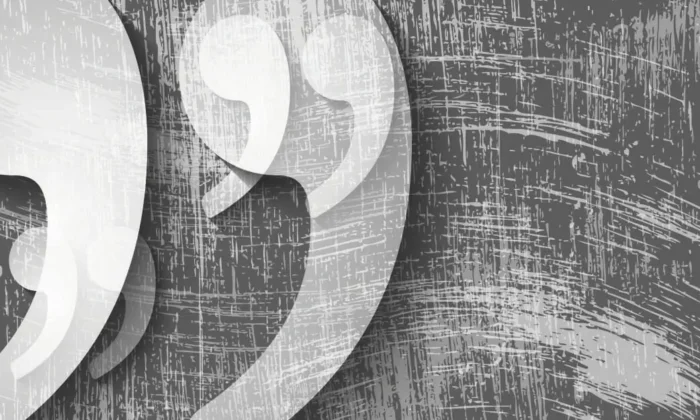Content 101: Writing Actionable Website Copy

Jump links:
- Writing Content 101
- Be Customer Centered
- Be Specific
- Make it Easy to Read
- Structuring the Perfect Page
- Writing a Great Headline
- Writing Great Body Copy
- Writing Great Calls to Action
- The Four P’s of Great Copy
Writing Content 101
The purpose of web copy is to create action
The major reason to focus on writing great content is to generate leads, customers, sales, and consequently, profits for a website. The major objective is to compel the online prospect to respond in some way or take action of some kind. It tells the audience to do something specific during or at the end of the presentation of the marketing message.
The AIDA Principle
Attention – Capture the audience’s attention
Interest – Get the reader’s interest
Desire – Build desire for your offer
Action – Induce action
The difference between benefits and features
Features are attributes, properties or characteristics of your product or service. Benefits, on the other hand, are what you can do, what you can have or what you can be because of those features. Consumers buy benefits and NOT features. This is one of the most important lessons to learn in writing copy. To write copy that sells, keep your eye firmly on the benefits.
Be Customer Centered
You can use “you”
When you write, pretend that you’re speaking confidently to someone you know, like and trust. You’re never lecturing. You’re engaging in a helpful conversation in which the other person’s voice isn’t heard but is anticipated and valued.
Write in a conversational style
Strive to write in a conversational style. Just remember, the more friendly and approachable, the better. Also, use contractions, it’s intimate, and it increases readership. Lastly, use common words not business jargon, you’ll appear more familiar, more friendly, and draw the reader closer.
Tell the readers what’s in it for them
Speak to the significant benefits for readers. You’re NOT important; the readers are. They want to know, “what’s in it for me?” Of course, you have an agenda but you can’t connect to your readers unless you write to their self-interests, not your own.
Speak in the reader’s language
This isn’t time to show off your vocabulary. Your style and your choice of words should match your reader’s style. A letter to information to IT professionals should speak their language, a letter to baseball fans should have the slang and punch of a sports column.
Be a mirror
Ultimately, the best content (and in fact, all the best marketing materials) aren’t really about you, your business or even it’s products and services – they’re about your customers. Your content should be a mirror. When prospects read it, let them see themselves: their hopes and fears, their values and dreams, and their best idea of who they are or would like to be.
Be Specific
Use hard numbers
Putting hard numbers on your statements lends an aura of objective scientific fact to your arguments. “Save $50” beats “Save Money.” In addition, the more precise the number – saying “51.7%” rather than “more than 50%” – the more credible your statistic.
Use testimonials and stories
People believe people who are like themselves. In this case, that refers to other prospects who became customers. Direct quotes from your customers that illustrate real-world success go a long way toward establishing trust.
Use reasons why
You want to distinguish your claims from those made by your competitors. Give your reader reasons why your product and service can really deliver on your promises. Unique features, experience, research and special strategies can be among the reasons why your offer deserves immediate attention.
Use relevant statistics
One way to proof specifics in your industry and to express your expertise is through statistics that you have created or gathered. The great benefit of statistics is the amount of information they convey. Always back them with reputable sources and you’ll be educating your prospects into paying customers.
Use numbered lists of information
People appreciate numbered lists of information because they do two important things:
- They tell the user exactly what to expect from the content, for example “5 Essential Tips on Selecting a Landscaper.”
- They typically filter large amounts of information, giving the reader the most essential nuggets to scan, pick and eventually read.
Make It Easy To Read
Write short sentences and short paragraphs
Try to keep your sentences nice and simple. And, with some exceptions limit your paragraphs to just 3-4 sentences.
Allow lots of white space
No crowding. Separate your paragraphs with a clean, clear line of empty space. This helps for “scan-ability” and increases usability.
Write meaningful subheads
Break up the content with the mini-headlines, in bold print, that helps tell your story and interrupts the monotony of long strings of text.
Use bulleted lists to summarize content
Use bulleted lists instead of paragraphs to make your content more “scan-able” for your readers. Many times a paragraph is much easier to read as a list instead of 2-3 sentences.
Bring attention to key phrases
You can add special formatting, such as boldface, italics, or different colored text, to help highlight the most important phrases or information.
Use inverse pyramid style of writing
Present key ideas, points and conclusions first, followed by less important information and background materials.
Present one idea per paragraph
When creating your content, break apart your ideas into the essential points for your readers, and then give them small “bites” to choose from.
Structuring The Perfect Page
Headline
The purpose of the headline is to encapsulate the most important part of your message in a headline. It typically appears at the top of the page content below the navigation. Usually, it is graphically distinguished from the rest of the copy using special dividers, boldface, or a larger type size. It may be a brief phrase or as long as 2-3 sentences. The best headlines present offers, benefits, news, or special features.
Body
This makes up the bulk of the page’s content and develops the message, or story, to your reader. It builds on the statement you made in your headline, and creates an irresistible case for why the reader should take action. Typically, the body includes, subheads, paragraphs, bullet lists, special call-outs, images, video and more. A good rule of thumb for length is 3-4 sentences per paragraph and 3-4 paragraphs per page. The best body copy presents facts, proof, promises and a story.
Call To Action
Usually stated toward the end of the body, this element tells the reader what to do next. It is the “call to action.” It might be as simple as this, “Call 1-800-123-4567 to reserve your seat at the next ‘Writing Content 101 Glide Seminar.’” Whether brief or elaborate, the call to action always tells the reader what to do to get the offer you have presented. The best calls to action motivate response by promising a benefit in exchange for taking action.
Writing A Great Headline
- Offer a strong and compelling promise.
- Highlight benefits to the reader.
- Explain exactly what the offer is.
- Appeal to the emotions.
- Use specifics.
- Arouse curiosity.
- Call out a specific target audience.
- Make an announcement.
- Ask a question.
- Begin with the words “how to.”
Writing Great Body Copy
Present evidence
Research, survey, tests – any of these may be a source of statistical evidence to support your case. Consider presenting information like, how much money people can save or earn, how much weight they can expect to lose, how much time they can save, or how much bigger, faster, better, your offer is compared to your competitors.
Quote customers
Do you have permission to quote happy customers who have said terrific things about your business? If so, let them speak on your behalf.
Reveal subordinate benefits
Got more good benefits? Go ahead and use them. After you use the big, most important benefit as your lead, you can usually find other benefits that, while less significant, can still support the sale.
Identify important features
The important word here is “important.” Less important features are things that are incidental to the product or service. Important features can often help explain how or why you can fulfill the benefits you promise.
Describe how it works
Before your prospects will put money in your coffers, you need to put pictures in their heads – pictures of how your product will work for them. A brief explanation of how they work can go a long way. Present your “demonstration” in a handful of short, easy-to-understand steps, generally no more than three or four.
Writing Great Calls To Action
Create urgency
Inertia isn’t just a physical phenomenon; it’s a key customer psychology. Without applied exterior force, prospects just don’t move. One of the most successful ways to apply psychological force is to create a sense of urgency by establishing a time limit.
Make a guarantee
Few things kill sales more quickly than uncertainty, fear of disappointment, or fear of wasting money. Whenever possible, offer a money-back guarantee. It’s the simplest way to overcome a prospect’s fears.
Provide multiple response options
Testing shows all people communicate in different ways. Typically the best approach is to offer multiple response options like phone, email, forms and so on.
Finish strongly in the last paragraph
You can call this the “re” paragraph, because most of the time it’s an opportunity to restate the big benefit and to remind prospects how important it is to respond to your offer.
The Four P’s Of Great Copy
- Pleasure and pain – Good copy creates anticipation for the satisfaction of a desire (pleasure) or the relief from pain. This is your lure for attracting the reader’s interest toward your product or services.
- Promise – Whether it’s an offer or a benefit, your copy always implies a promise to the reader: When you buy this service or respond to this page, you’ll get something of value in return.
- Proof – No one will simply take you at your word for anything. You make your case by proving it, by submitting evidence, testimonials, statistics, facts and reasons why you can fulfill the promise you’ve made.
- Purchase – The cha-ching moment. Through the influence of your persuasive power (and a bit of luck), the prospect will follow your call to action and become a customer.



